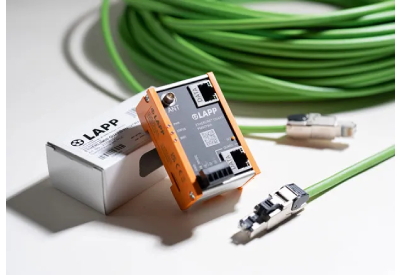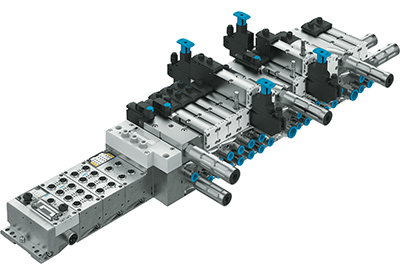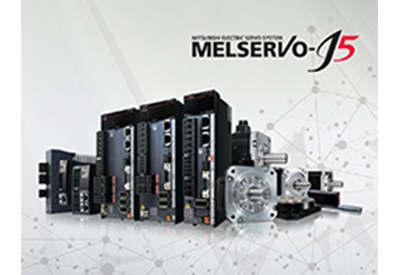Festo’s Smart Proximity Switch Commissions Itself for Time Savings that Add Up
April 11, 2024
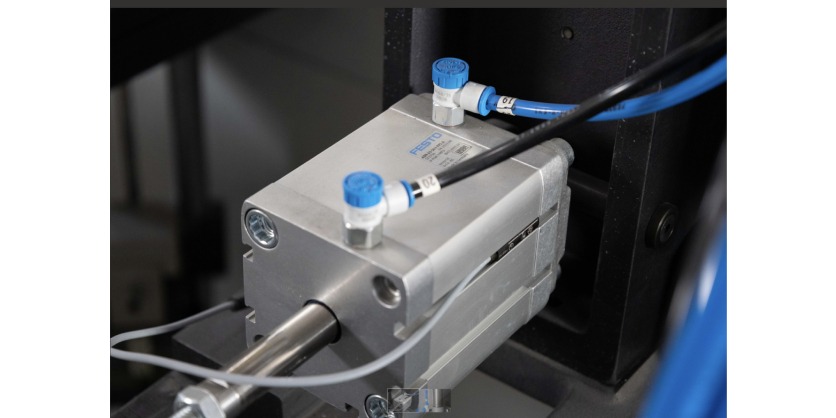
There are indeed rewards for machine builders who sweat the small stuff. The latest iterations of many tiny but essential components like sensors, cameras, and switches can pack a great deal of innovation for their diminutive size.
For Pro-Line Automation Systems of Woodbridge, ON, adopting Festo’s SDBT-MSX – the world’s first proximity switch with auto teach-in – eliminated a small but previously necessary step for achieving final operational readiness of their highly advanced, automated CNC fabrication systems for window and door manufacturing. The SDBT-MSX’s auto teach-in feature automatically learns and sets the correct final switching point when the machine is turned on the first time, unlike legacy proximity switches which need follow-up, manual tuning after commissioning. With many proximity switches on each Pro-Line machine, the time savings from no longer having to make this follow-up adjustment really add up.
Pro-Line is extremely busy, as are its customers across North America, facing strong demand as the continent ramps up efforts to launch more residential construction. Single family, multi-unit and high-rises, all have windows made by Pro-Line customers using its machines. The company has seen its sales almost double over the past five years, says owner Vinode Ramnauth, and it’s embarking on a US expansion with the potential to double sales again over the next two years. The company is an eager early adopter of new technologies that makes its staff more efficient. It’s already the biggest user of the SDBT-MSX in North America for that reason.
This feature-rich proximity switch is one example of the advances Festo is making in designing next-generation components, large or small. Besides incorporating performance enhancements, it makes simplifying installation, commissioning, and configuration points of emphasis.
Proximity switches are affixed to pneumatic actuators to signal the PLC or controller that the full extension of the piston has been reached. They are invariably one of least expensive functioning components on a Bill of Materials.
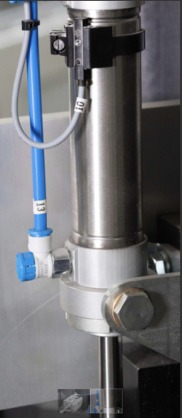
The SDBT-MSX is the most advanced in its class of magnetic proximity switches. It’s about the size of a baby’s pinky finger. You probably wouldn’t notice it on a machine unless you look for it.
First and foremost, what makes it special is the auto teach-in feature. When setting up a legacy proximity switch, a technician generally locates the actuator in the machine prior to commissioning, affixes the switch in the T slot or bracket of the actuator at the approximate end position of the extended piston. Since commissioning that legacy switch requires a power supply, it’s generally done when the machine is turned on for the first time, which usually does not happen under full compressed air load. When the machine is eventually turned on under full load, each such switch must be fine-tuned.
That adjustment usually takes just a couple of minutes per switch, but multiplied by the number of switches on a machine, often several dozen and sometimes in difficult-to-reach locations, those extra minutes turn into hours of staff time. (Occasionally, these post-commissioning adjustments must be made at the end user, a much larger allocation of time, plus travel expenses.)
Conversely, initial setup of the SDBT-MSX doesn’t require a power supply. The switch can be affixed to the actuator at a work bench, prior to installation. Once the actuator is in place, the SDBT-MSX cable is plugged into the controller. When the machine is powered on for commissioning and completes just four cycles, the SDBT-MSX’s auto-teach capability automatically sets the correct final switching point without impacting the application.
“For us, not having to go back after commissioning and powering on the machine to individually adjust the position of each sensor is a huge time-saving, and helps streamline our production,” says controls engineer Andrew Nauth.
Additionally, the end-stroke tolerance on the SDBT-MSX can be adjusted easily on the device within a range of 2-15 mm to adapt to different operating conditions. Typically, a standard cylinder switch may have a 2-mm detection range, fine for when the piston is hitting a hard stop on metal.
However, with vinyl or polymers that have some give, a soft stop can be a challenge for a legacy switch. Many of Pro-Line’s CNC systems are cutting vinyl, and signalling the piston end stroke often requires a detection range greater than two mm. On some machines, Pro-Line has had to employ two legacy proximity switches on the same actuator to achieve a wider detection range, an additional cost in componentry, PLC logic, and staff time. “So, being able to use just one switch, the SDBT-MSX, and adjust the tolerance to get the same result is definitely an advantage,” says Nauth.
Using its capacitive teach button, the SDBT-MSX can be programmed for PNP (negative load) switching output or NPN (positive load), NO (Normally Open) or NC (Normally Closed) operation, so machine builders can bulk-purchase just one variant for all situations. For Pro-Line, that represents another potential cost efficiency, as it has begun to design new models with remote I/O. ”Right now we are buying (pre-defined) NPN (switches), but when we start using remote I/O, on those machines we will be using PNP,” says Nauth. “So, for us it’s an advantage to be able to stock the same switch for all machines, and not need multiple pre-defined types.”
SDBT-MSX is set-it-and-forget-it technology. As a solid-state device, it’s rated for hundreds of millions of cycles and will probably outlast any actuator on which it is mounted. It’s ideal for new-builds and as a direct replacement for legacy switches on existing machines.
Festo at a glance
Festo, one of the world’s leading supplier of automation technology and technical education, is deploying its products and services to meet the challenges of digitization and smart production. Founded in 1925, the family-owned company based in Esslingen, Germany supports a wide range of needs for advanced solutions in factory and process automation. In Canada, Festo has been supporting Canadian industry for almost 50 years, continuously elevating the state of manufacturing in this country with innovative products, optimized motion control solutions and unrivalled support.
Globally, some 300,000 customers put their trust in the company’s pneumatic and electric drive products and technology. In addition, Festo Didactic provides state-of-the-art training equipment and educational programs for industrial companies and educational institutions – about 56,000 customers worldwide. The Festo Group registered sales of €3.81 billion in the 2022 financial year and is represented worldwide at 250 locations with about 20,800 employees. About 7% of its annual turnover is invested in research and development.
More Information
Related Product
Festo Electric and Pneumatic Intralogistics Solutions Push/Sort, Grip/Pick, and Lift/Convey
Festo introduces the company’s comprehensive selection of electric and pneumatic components for intralogistics motion automation – pushing and sorting, gripping and picking, and lifting and conveying.


